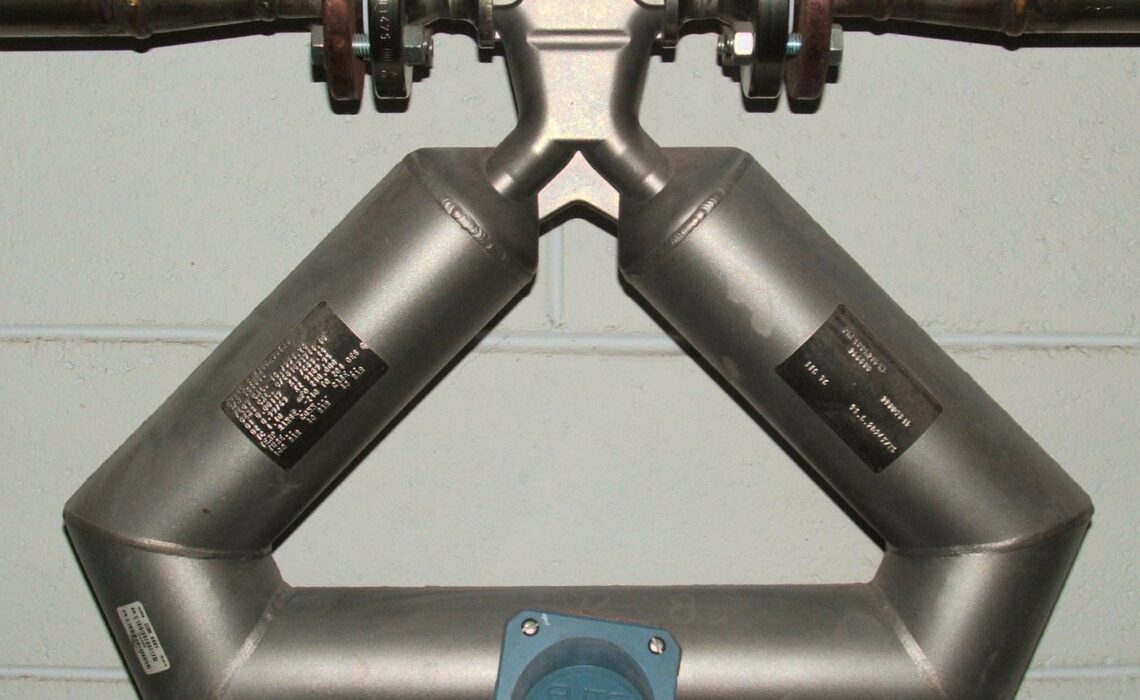
Fluid dynamics play a pivotal role in various industries, with precision in fluid velocity measurement being crucial for optimal performance. In this context, electromagnetic flow meters have emerged as the most accurate and reliable means of measuring fluid velocity. This article explores the revolutionary impact of electromagnetic flow meters, focusing on their application in oil and gas industries.
Electromagnetic flow meters operate on the principle of inducing a magnetic field into the fluid and measuring the voltage generated as the fluid passes through. This technology offers distinct advantages over traditional flow measurement methods, such as mechanical meters. Unlike mechanical meters, electromagnetic flow meters have no moving parts, reducing the risk of wear and tear, and minimizing maintenance requirements.
The Significance of Accurate Measurements in Oil & Gas
In the oil and gas industry, precise fluid velocity measurement is paramount for several reasons. Accurate measurements contribute to operational efficiency, enhance safety protocols, and ensure overall system performance. The complexities of oil and gas fluid dynamics demand advanced measurement techniques to address challenges like varying viscosities, high pressures, and extreme temperatures.
Common challenges in oil and gas fluid dynamics include the need for reliable measurement devices in harsh environments. This is where electromagnetic mass flow meter, with their robust and non-intrusive design, excel. Their ability to provide accurate readings in challenging conditions makes them indispensable in the oil and gas sector.
Features and Capabilities of Zoeller M53 Sump Pump
One exemplary electromagnetic flow meter is the Zoeller M53 sump pump. This device boasts features that significantly contribute to accurate fluid velocity measurement. The pump’s electromagnetic flow meter technology ensures precise readings, even in the presence of impurities in the fluid. Additionally, the Zoeller M53’s non-contact measurement method eliminates the risk of clogging, a common concern in oil and gas operations.
The Zoeller M53 sump pump is designed to enhance reliability in challenging environments. Its durability and resistance to corrosion make it well-suited for the harsh conditions often encountered in oil and gas applications. The pump’s ability to withstand extreme temperatures and pressures further solidifies its reputation as a reliable choice for fluid velocity measurement.
Real-world Applications
Several case studies highlight the successful implementation of electromagnetic flow meters in the oil and gas industry. These studies showcase improved outcomes and operational benefits achieved through the use of advanced flow measurement technology. Professionals in the field attest to the accuracy and reliability of electromagnetic flow meters, emphasizing their role in optimizing processes and ensuring the integrity of fluid systems.
While electromagnetic flow meters excel in many applications, it’s essential to explore alternative technologies like mass flow meters. Mass flow meters measure the mass of a fluid directly, providing an alternative approach to velocity-based measurements. Understanding the distinctions between electromagnetic and mass flow meters is crucial in choosing the most suitable technology for specific applications.
Mass flow meters offer advantages in applications where measuring mass directly is more critical than determining velocity. However, in many oil and gas scenarios, where understanding fluid velocity is paramount, electromagnetic flow meters remain the preferred choice due to their accuracy and reliability.
Overcoming Challenges in Fluid Dynamics
Addressing challenges in oil and gas fluid dynamics requires advanced technologies capable of mitigating issues such as corrosion, abrasion, and extreme environmental conditions. Electromagnetic flow meter stand out in this regard, as they provide accurate measurements without compromising on durability. Their non-intrusive design minimizes the risk of clogging, ensuring consistent performance in challenging circumstances.
An in-depth analysis of the Zoeller M53 sump pump reveals its impressive performance in various scenarios. The pump’s electromagnetic flow meter technology proves instrumental in delivering accurate readings, even in demanding environments. Users consistently praise the pump for its reliability, durability, and low maintenance requirements, making it a valuable asset in oil and gas applications.
Future Trends in Fluid Velocity Measurement
As technology continues to advance, the future of fluid velocity measurement holds exciting possibilities. Emerging technologies, such as enhanced sensor capabilities and data analytics, promise to further improve the accuracy and efficiency of flow measurement. Predictions for the future of electromagnetic flow meters suggest increased integration with smart systems, providing real-time monitoring and diagnostics for enhanced control and optimization.
Conclusion
In conclusion, the accurate measurement of fluid velocity is imperative in optimizing processes across various industries, especially in the challenging environments of oil and gas operations. Electromagnetic flow meters, exemplified by the Zoeller M53 sump pump, have revolutionized fluid velocity measurement with their accuracy, reliability, and durability. As technology continues to evolve, these advancements will undoubtedly shape the future of fluid dynamics in industries, ensuring safer, more efficient, and environmentally sustainable practices.





